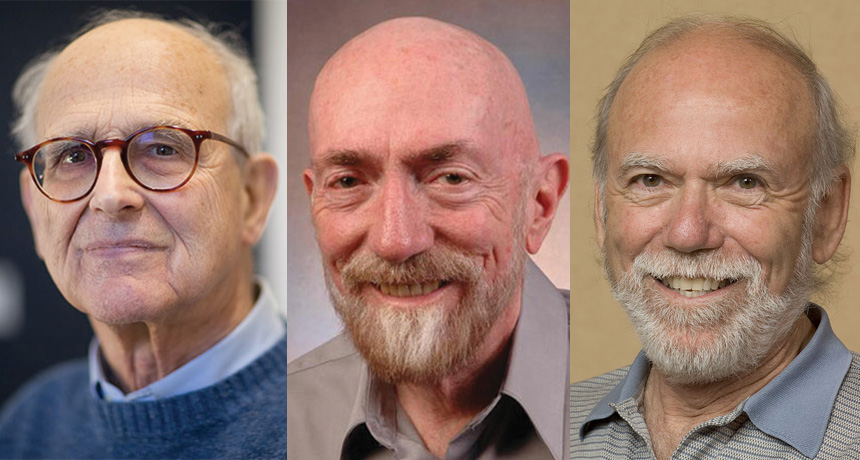Trio wins physics Nobel Prize for gravitational wave detection
Prize comes quickly for LIGO masterminds

LIGO PIONEERS Rainer Weiss of MIT (left), and Kip Thorne (middle) and Barry Barish (right), both of Caltech, won the Nobel Prize in physics for their leadership roles in the LIGO experiment.
From left: Bryce Vickmark; Caltech; R. Hahn/Wikimedia Commons